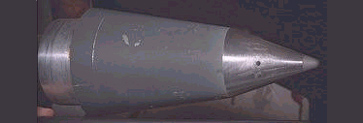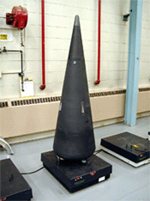
Joan Salute
Like most of us, I’ve had to think hard about what makes for a successful project manager. Haven’t we all read, or written out for colleagues, lists of requirements? I bet we can recite them in our sleep.
Project managers need the ability to:
- Plan
- Schedule
- Budget
- Monitor
- Control
- Etc., etc., etc.
I don’t know about you but I have a hard time with these lists. Of course these abilities matter, but for me just one stands out as the defining characteristic of any good project manager, and this is one usually not included in the list or easily encapsulated in a single word. That characteristic is his or her willingness to challenge the conventional way of doing things.
This is something all good project managers do by nature, I think — what we’re hardwired for, if you will. Look back over your own life and I bet you’ll see that it is something you’ve been doing from a very early age. In school, we didn’t confine ourselves to ‘staying within the lines’ even when our teachers judged this as disruptive, and perhaps even suggested we were behaving inappropriately.
As a project manager, I’ve been in situations where I’ve had to rethink the conventional ways of doing things. On the first hardware project I managed, for instance, there were just five months to get from funding to flight. The pressure on us was tremendous, and, given the timeframe, made for a very high chinning bar. The project involved testing an ultra-high-temperature ceramic material for use on reentry vehicles. If the project was successful, the results could lead to revolutionary changes in the design and protection of spacecraft. Not only was it a high-profile mission for our team but also for the Center. At Ames we normally developed material and payloads and let other Centers fly them for us. This was our first chance to handle the entire flight experiment. That we were operating under such a tight timeline meant there was no room for error.
One of the biggest challenges to our success turned out to be the machining of some specialty materials. We had a two-week period scheduled for this. Everything seemed to be going well at first. We located a vendor on the East Coast, and their computers read the files we sent. After five days the vendor called to say the output was not coming out like we had hoped.
Roaring along until then, the team’s morale took a nosedive as attitudes from the top down fell flat. Once the shock wore off it was apparent that if something didn’t happen quickly we’d be paralyzed. No one had faith we could turn it around. Our Chief Engineer was saying things like, “We gave it our best shot,” as if he was admitting we should throw in the towel.
I needed to make something happen before things got completely out of my control. When the leaders announce they are giving up, the rest of the team has little incentive to press on. “We gave it our best, but it just couldn’t be done” might be the dignified way to say you’re resigning yourself to defeat, the status quo response, but I had no intention of giving up yet. I was already thinking how best to engineer our recovery.

SHARP-B2 reentry vehicle before flight with two of the four Ultra High-Temperature Ceramics (UHTC) strakes visible.
I adopted the attitude that we were going to find someone else to machine the materials, and it would get done on time. It was going to be a huge test of my leadership skills. The timeline we’d been given for the project was enough of a test — now I had to find time to recover in a schedule designed with no room for error. Despite the skeptical looks I got, I forged a plan and proceeded as if this was business as usual.
Business as usual? Well, hardly. We started out by going through the phone book. Three of us worked the phones and called every vendor in the book. Nineteen of twenty had no idea what we were talking about. When we mentioned the name of the material, they either were not willing to take the risk or the timeline was too short. The one out of the twenty who did recognize the material would say something like, “You know, I attended a conference awhile back where there was someone who worked with that type of material,” and that led to another twenty calls.
After a long phone trail, we finally found two companies, each of whom could do part of the job. The end of the story is, we got the materials machined and met our schedule.
I’m proud that the team got back on track and we accomplished our goal. For that to happen, it required me to deliver on what I said I could do, which was to deliver to a tight schedule. This is what served as the impetus to get the others back on track. Oftentimes, challenging the status quo is about simply believing in oneself.
To make things happen you also have to fight sometimes for what you believe in. Again, think back to when you were a kid. Remember how sometimes you got one of those teachers who respected you for your individuality and who appreciated your commitment to sticking to your core values.
I’ve been in situations that tested my core values. On another project I was leading, we had what looked like plenty of time from funding to flight. It was a straightforward mission. All we intended was to launch a vehicle modified to include experimental materials, study it as it reentered the atmosphere, and then recover it. The Pentagon informed us that because our mission “appeared” to conflict with the Strategic Arms Reduction Treaty (START), we may not be able to recover our vehicle. We would need explicit Pentagon approval to recover our vehicle, but their expectation was that approval would be granted. A two-month approval process dragged on for eleven months without approval or denial. We proceeded to design the flight as if we’d be allowed to recover the vehicle.
They finally approved recovery of the vehicle, but stipulated that our data must remain classified. You can probably imagine my frustration. After waiting this long for the first decision, I had to decide was it worth it to fight this decision. Whereas some project managers might have gotten fed up and accepted the ruling, the status quo, I dug in my heels and said ‘no,’ I’ve got stamina to keep going and I’m going to fight this one. It was a NASA flight experiment for the Aerospace Industry and for NASA — we needed this data. I estimated the value of the mission would drop by 80 percent if the data were classified.
It’s true you have to choose your battles, but if you’re not willing to fight you don’t win any. It was a risky strategy, perhaps a bit bold, but our team truly believed the data met the requirements for non-restricted distribution. As it turned out, we won them over.
Everyone has to adopt his or her own theme song. For me on this project, it was one that was popular on the radio at the time. The refrain went, “I get knocked down, but I get up again.” It just seemed to fit how I felt on this mission. They tried to knock me down, but I kept coming back. You need to adopt your own fight song. Make it one you draw strength from. Where to find that strength? Start by looking at your core values.
As it was, my song played on like a broken record. On this same mission I got knocked down again. Another national lab approached us with an offer to develop and provide GPS equipment to track our reentry. They had been looking for funding for a long time to develop their GPS equipment. There was pressure on me from the Air Force to accept the offer. The Air Force had helped us out in the past and now wanted this from us. No one could believe it when I turned the offer down. The pressure to accept came down even heavier when the other lab offered us the equipment for a greatly reduced price. Again, I said ‘no.’
In cases like this, knowing what NOT to do can be as important as knowing what to do. I haven’t once regretted the decision I made in this case. It was uncomfortable to be the ‘bad guy’ in this instance, but I said no because I felt it would have diverted our personnel resources and distracted us from our mission. Strong leadership requires making unpopular decisions sometimes. The status quo thing to do would have been to try and keep everyone happy, but I drew a straight line in my mind as to what I saw was necessary to achieve a successful mission and never wavered, and we did have a successful mission, I believe, because we remained focused. Remaining focused on the core requirements is critical to meeting costs and schedule.
You can’t always do what people want you to and expect to be loyal to your own core values. There will always be somebody with a competing interest there to challenge you on a judgment call. You’ve got to decide who you want calling the shots for you, yourself or someone else. That’s why I believe challenging the status quo means challenging yourself to ‘Do the right thing.’ When you know what’s right, you only need listen to yourself.
Lessons
- A characteristic of any good project manager is his or her willingness to challenge the conventional way of doing things.
- To make things happen you also have to fight sometimes for what you believe in.
- Knowing what NOT to do can be as important as knowing what to do.
Search by lesson to find more on:
- Challenging the Status Quo








